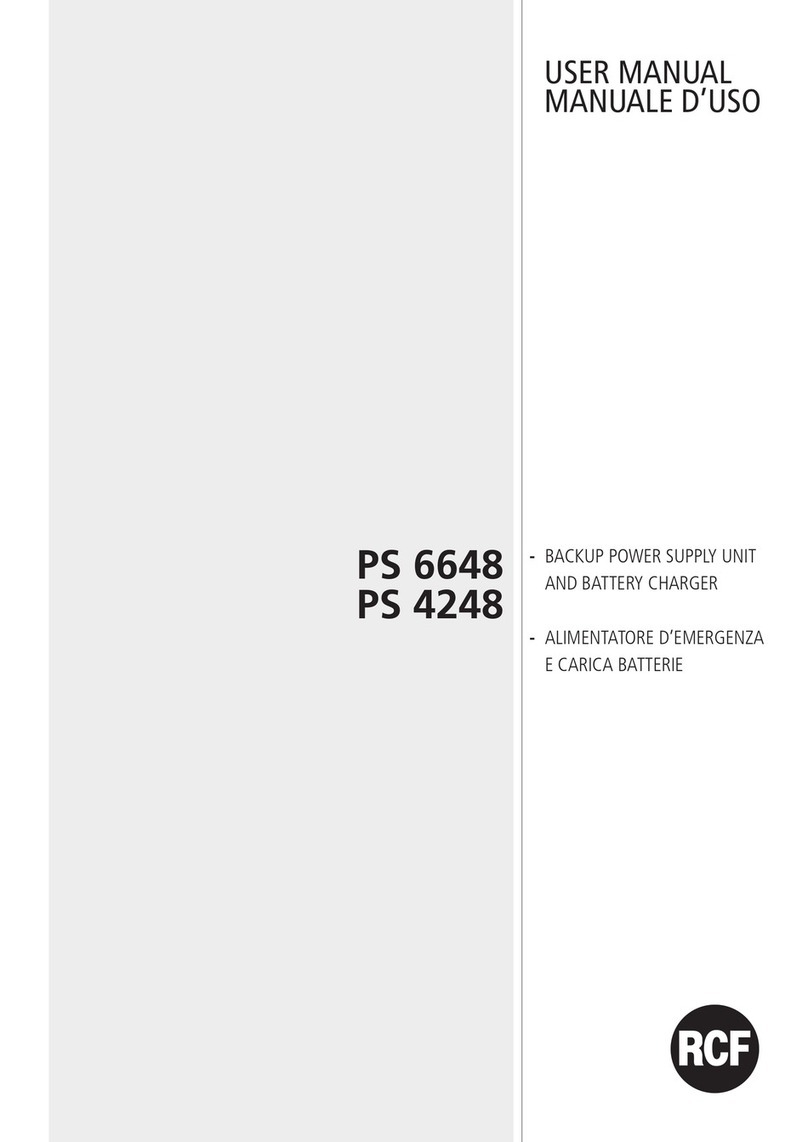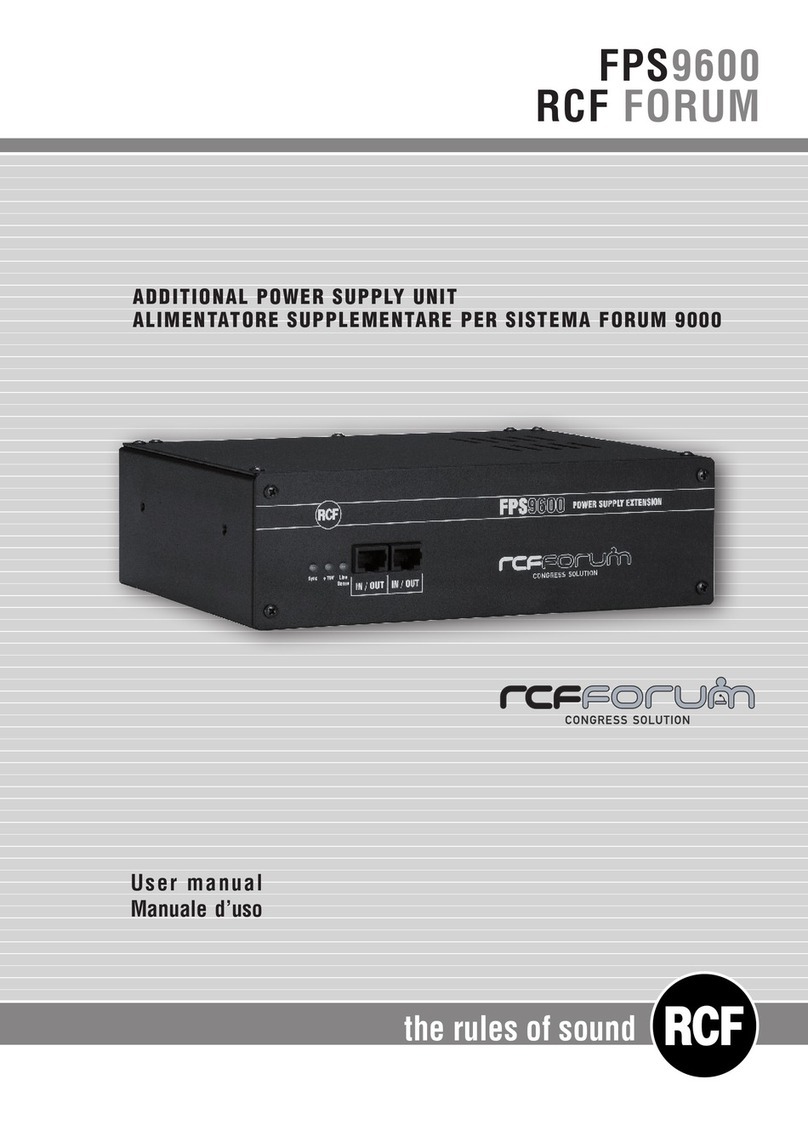
5
ENGLISH
4. Never attempt to carry out any operations, modications or repairs that are not
expressly described in this manual.
Contact your authorized service centre or qualied personnel should any of the following
occur:
-The product does not function (or functions in an anomalous way).
-The power cord has been damaged.
-Objects or liquids have got in the unit.
-The product has been subject to a heavy impact.
5. If this product is not used for a long period, disconnect both the power cord and
batteries.
6. If this product begins emitting any strange odours or smoke, switch it off immediately
and disconnect both the power cord and batteries.
7. Do not connect this product to any equipment or accessories not foreseen.
For suspended installation, only use the dedicated anchoring points and do not try to
hang this product by using elements that are unsuitable or not specic for this purpose.
Also check the suitability of the support surface to which the product is anchored (wall,
ceiling, structure, etc.), and the components used for attachment (screw anchors, screws,
brackets not supplied by RCF etc.), which must guarantee the security of the system /
installation over time, also considering, for example, the mechanical vibrations normally
generated by transducers.
To prevent the risk of falling equipment, do not stack multiple units of this product unless
this possibility is specied in the user manual.
8. RCF S.p.A. strongly recommends this product is only installed by professional qualied
installers (or specialised rms) who can ensure correct installation and certify it according
to the regulations in force.
The entire audio system must comply with the current standards and regulations
regarding electrical systems.
9. Supports and trolleys
The equipment should be only used on trolleys or supports, where necessary, that are
recommended by the manufacturer. The equipment / support / trolley assembly must be
moved with extreme caution. Sudden stops, excessive pushing force and uneven oors
may cause the assembly to overturn.
10. Do not obstruct the ventilation grilles of the unit. Situate this product far from any
heat sources and always ensure adequate air circulation around the ventilation grilles.
11. Do not use solvents, alcohol, benzene or other volatile substances for cleaning the
external parts of this product. Use a dry cloth.





























